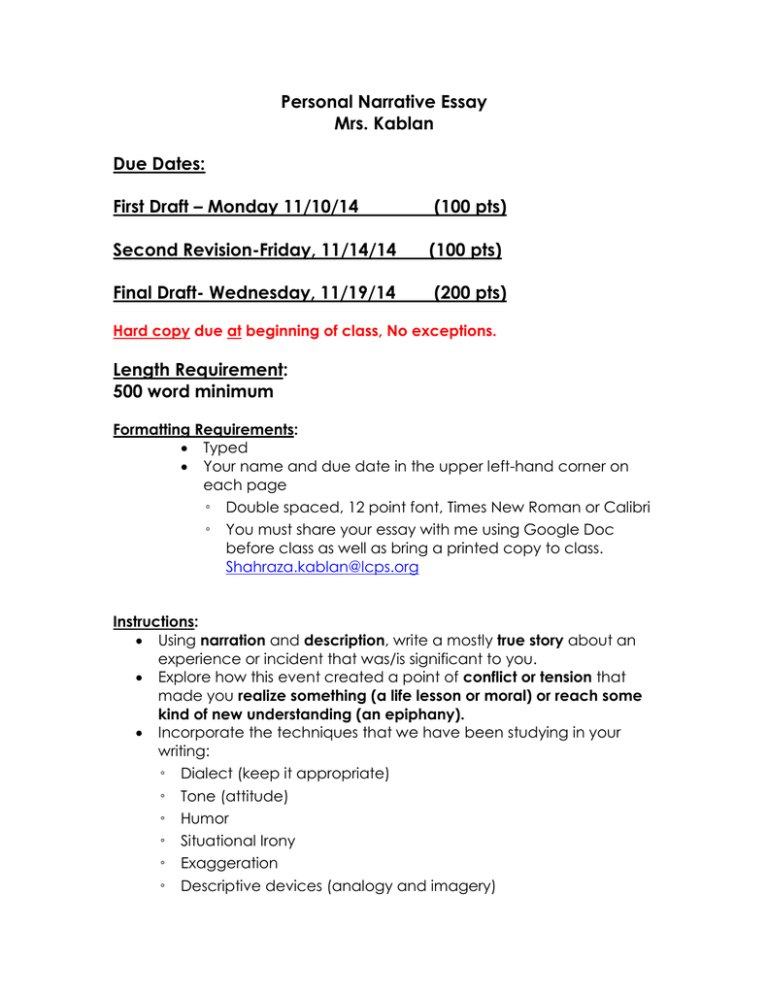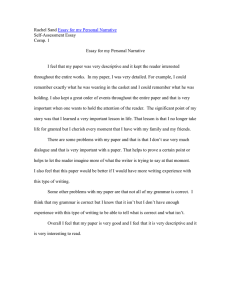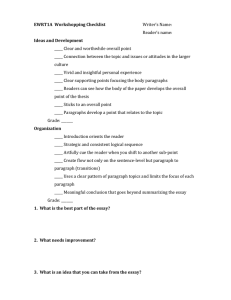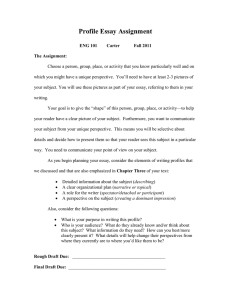Personal Narrative Essay Mrs. Kablan Due Dates:
advertisement

Personal Narrative Essay Mrs. Kablan Due Dates: First Draft – Monday 11/10/14 (100 pts) Second Revision-Friday, 11/14/14 (100 pts) Final Draft- Wednesday, 11/19/14 (200 pts) Hard copy due at beginning of class, No exceptions. Length Requirement: 500 word minimum Formatting Requirements: Typed Your name and due date in the upper left-hand corner on each page ◦ Double spaced, 12 point font, Times New Roman or Calibri ◦ You must share your essay with me using Google Doc before class as well as bring a printed copy to class. Shahraza.kablan@lcps.org Instructions: Using narration and description, write a mostly true story about an experience or incident that was/is significant to you. Explore how this event created a point of conflict or tension that made you realize something (a life lesson or moral) or reach some kind of new understanding (an epiphany). Incorporate the techniques that we have been studying in your writing: ◦ Dialect (keep it appropriate) ◦ Tone (attitude) ◦ Humor ◦ Situational Irony ◦ Exaggeration ◦ Descriptive devices (analogy and imagery) Structure Requirements: This is an open form essay, so you do not need a formal thesis statement or an argumentative structure. You are telling a story. You can start at the beginning, the middle, or even the end, and use flashbacks to give exposition (background information) where needed, as long as the reader can understand what happened when. Use a graphic organizer to decide where to put events in terms of order. Break paragraphs where you think you detect shifts in your narrative that call for paragraph breaks. The lesson, moral, or epiphany should be at the end. You will not have a “conclusion” paragraph per se, but you should give some thought as to what you want your reader to take away in the final paragraph of your essay. What did you learn? How did you change, or how did the world change, because of this experience? Write in the first person (I…). Attempt to interact with the reader. Keep the tone conversational by writing as if you are speaking to a close friend or associate. (“You may think I would know better but I didn’t.”) Use all the descriptive language you can muster so that the reader can feel, taste, smell, hear, and see every bit of your story.



